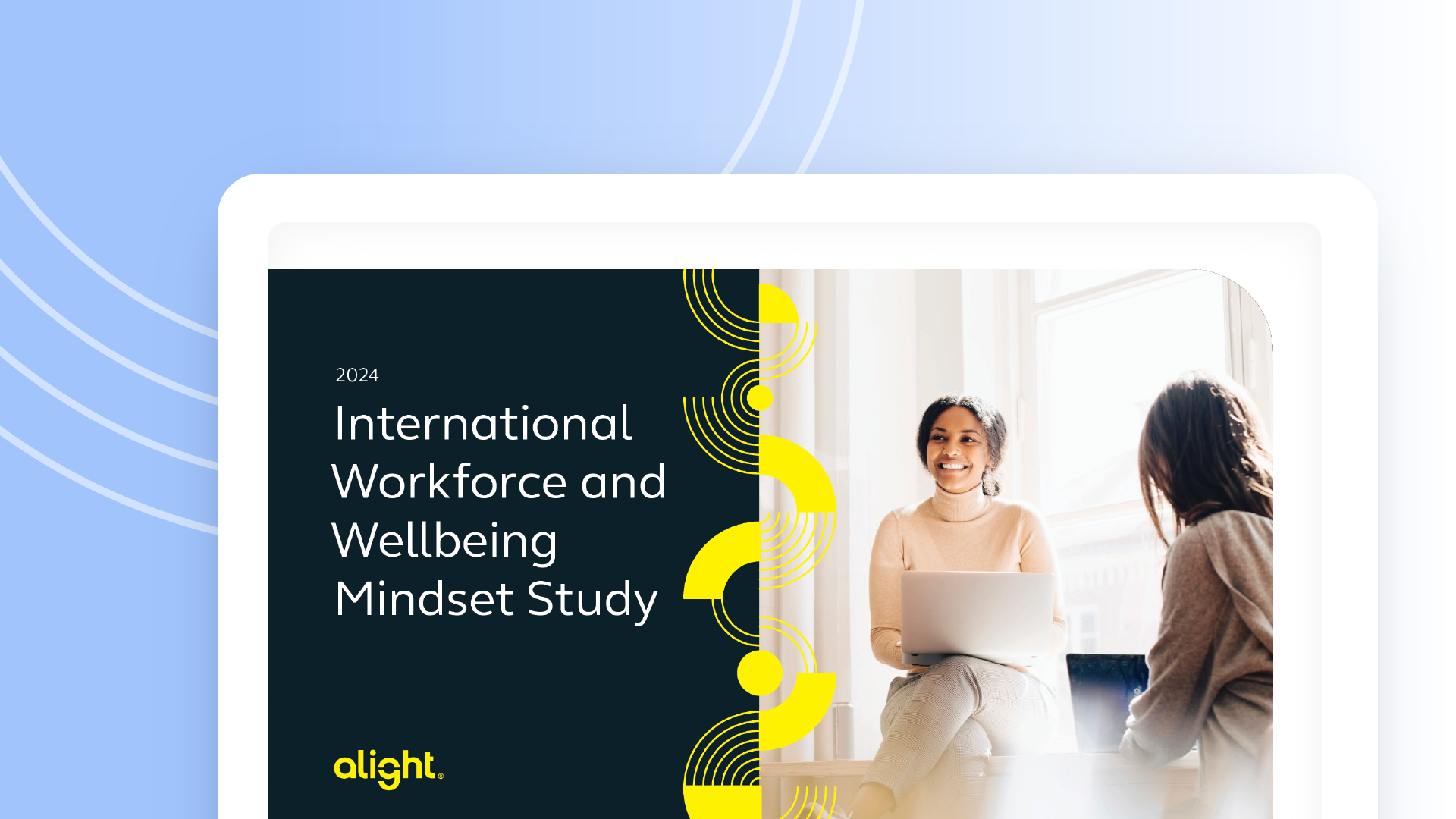
Wellbeing continues to sit at the heart of every conversation around workforce resilience and organizational performance. The key? Integrated employee benefits. But there’s a growing disconnect between what employees need and how benefits are being delivered.
For example, mental health, chronic pain, and financial stress don't happen in isolation. Yet, too often, employee benefits are designed without regard for how they are truly connected.
In a recent webinar, Jill Westhoff, VP of Wellbeing Strategy & Solutions from Alight, Matthew Jakupcak, Senior Director of Clinical Quality from Lyra Health, and Claire Morrow, Senior Physical Therapy Consultant Manager from Hinge Health came together to discuss this challenge. Their discussion shed light on how fragmented benefit ecosystems contribute to employee burnout, low engagement, and rising healthcare costs - and offered a powerful alternative model, rooted in integration, personalization, and empathy.
“When we ignore one piece of the puzzle, it doesn’t just slow down recovery - it can be a barrier to even starting”
Matthew Jakupcak
Clinical Psychologist, Lyra Health
Fragmentation: The hidden cost of disconnected benefits
Alight’s 2024 Mindset Study found that just 44% of employees report positive overall wellbeing, with nearly half considering leaving their jobs - and for many, better benefits and work-life balance could be a decisive factor in staying.
But today’s average employer frequently offers over 20 benefits options. As Jill Westhoff, VP of Wellbeing Strategy and Solutions at Alight, described, this is a “benefits sprawl” of offerings.
Along with too many vendors, there are disconnected systems and inconsistent employee experiences.
Employees are often overwhelmed, unsure where to turn, and as a result, may delay seeking care or taking action altogether.
The consequence? A costly cascade of untreated conditions, disengagement, and missed opportunities for early intervention.

2024 Alight International Workforce and Wellbeing Mindset Study
The study’s goal is to understand employee perceptions to help employers optimize their employees’ wellbeing and experiences to improve engagement, productivity and performance.
Whole-person care: Where employee benefits integration begins
Mental health and chronic pain are deeply intertwined. Hinge’s research shows that 65% of people with depression also experience chronic pain, while 27% of individuals with chronic pain develop depression. Treating these issues separately fails to address the root challenges and slows recovery.
Whether it’s anxiety inhibiting physical therapy progress or pain compounding symptoms of depression, coordinated support drives significantly better outcomes. That’s why solutions like Lyra Link - which bridges mental health care with musculoskeletal support from Hinge Health - are game-changers. With a simple, technology-powered warm referral system, providers can connect employees to the right care quickly and compassionately.
The power of technology and partnership with integrated care
Lyra, Alight, and Hinge Health show how shared purpose and smart systems can break down silos in employee benefits:
- Alight’s Worklife® platform creates a “single front door” for benefits navigation, guiding employees through life moments - from checking their 401(k) balance to coping with a new diagnosis.
- Lyra’s Empower platform enables seamless provider collaboration and matches members to care based on clinical need and personal preferences.
- Hinge Health’s TruMotion uses phone cameras and machine learning to monitor exercises, improving member engagement and therapist support.
Importantly, all three organizations are committed to a high tech, human touch AI: using technology to simplify tasks and empower providers - not replace them. From matching care to streamlining workflows, AI makes personalization and early intervention scalable without compromising empathy or replacing the human touch.
The ROI of integrated benefits - not just about claims
Yes, cost matters, especially in uncertain economic times. But the ROI of integrated care goes far beyond reduced healthcare spend.
According to Jill Westhoff, even a 1% increase in benefits utilization for a 10,000-person employer can translate into $1 million in savings. And with ROI guarantees and outcome transparency built into their models, employers can invest in benefits programs with confidence.
With employee benefits planning for next year underway, it's a good time to review your ecosystem.
- Clinical integration – Are your vendors co-managing care across conditions like mental health and chronic pain?
- Seamless referrals – Can employees easily transition between services with technology-enabled warm handoffs?
- Unified member view – Is there a centralized platform offering personalized recommendations and full benefit visibility?
- Shared outcomes – Are vendors aligned on measuring success beyond individual KPIs?
- Proactive personalization – Is AI (with a human touch) used to identify at-risk employees early and guide them to the right care?
Better wellness outcomes start with a more connected future
Not everyone has a physical therapist in their corner - but through integrated care and thoughtful technology, your people can still feel deeply supported. Ideally, employees should feel welcomed, guided, and genuinely understood.
By bringing together mental health, physical support, and holistic navigation, organizations can reduce costs while building cultures of care, resilience, and trust. Alight’s Partner Network helps you extend the breadth of your benefits for your people and their families to provide a truly holistic offering.
If this conversation sparked ideas for evolving your employee benefits strategy, reach out. Let’s build that integrated future together.

Wellbeing
Employee Wellbeing Solutions
Redefine employee wellbeing. Holistic wellbeing designed for your unique employee needs.


